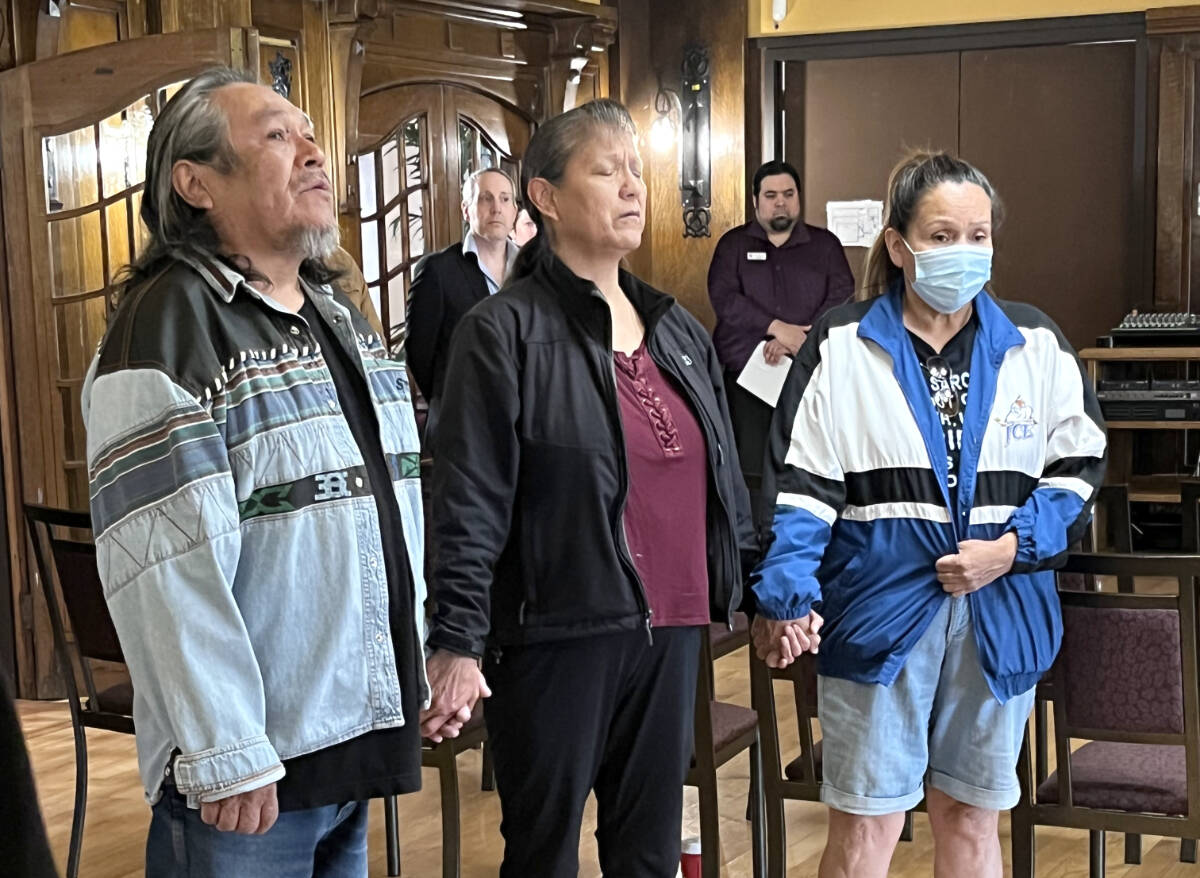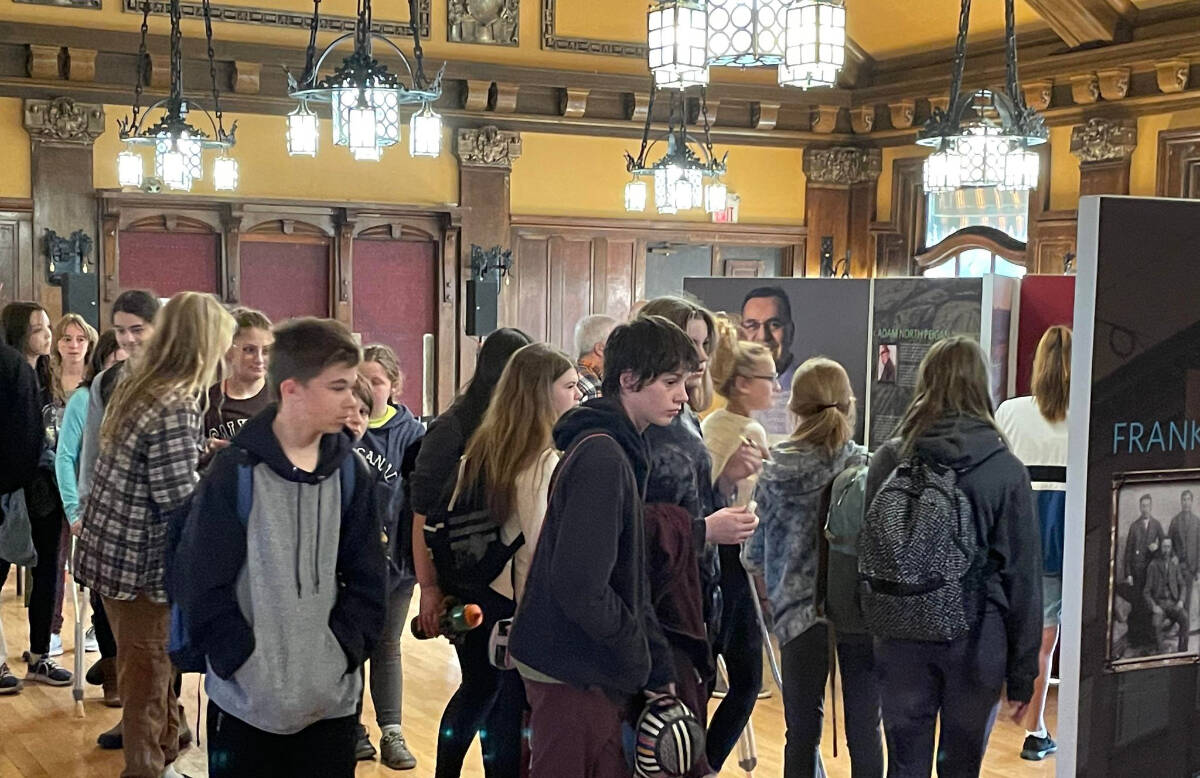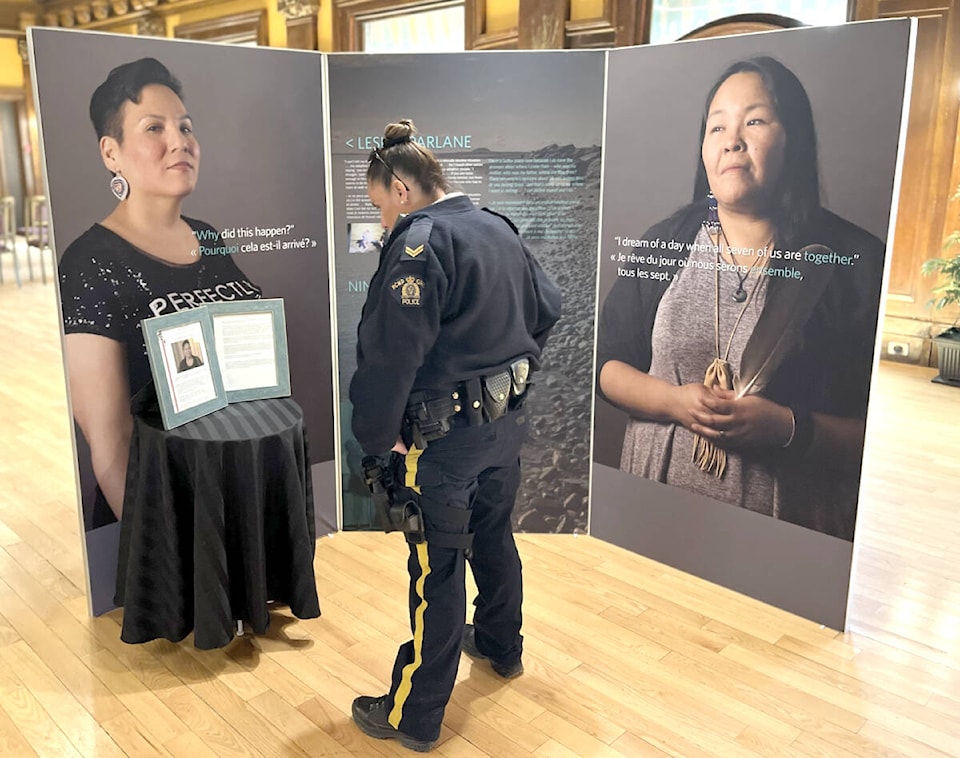A travelling exhibit telling the history of the “Sixties Scoop” and its survivors was on display at the Cranbrook History Centre on Wednesday, May 11.
The “Sixties Scoop Indigenous Society of Alberta” (SSISA), in partnership with the Cranbrook History Centre and the Cranbrook Public Library presented the Bi-Giwen: Coming Home – Truth Telling from the Sixties Scoop exhibition, which is touring B.C.
The first of its kind exhibit shares the experiences of survivors, including 12 personal testimonials of strength and resilience.
The Sixties Scoop refers to government practices across Canada from the 1950s to the 1980s that led to an unknown number of First Nations, Metis and Inuit children taken from their parents, families and communities by child intervention services and placed in non-Indigenous families. Many of these children experienced abuse, mistreatment and neglect and lost touch with their families, communities, culture and traditional language.
The opening and unveiling of Wednesday’s exhibit saw the presence of local dignitaries and community members, and members of the public visited throughout the day, including 238 students and 100 adults.
The opening prayer was offered by Ktunaxa Elder Sophie Pierre, and representatives of the SSISA, City of Cranbrook, the Cranbrook History Centre and the Cranbrook Public Library were also in attendance.
“The Sixties Scoop … refers to the mass removal of Indigenous children from their families into the child welfare system, in most cases without the consent of their families of bands,” said Sandra Relling, President of SSISA. “It’s used to describe the policies of and practices in which Indigenous children were taken from their birth families and placed in either foster or adoptive care, starting in the early 1950s, and arguably continues in present day.”
Relling said that the children placed in homes often a great distance from where they were born. Separated from family and culture, they were often subjected to racism and emotional, physical, mental, sexual and spiritual abuse.
“Many survivors of the Sixties Scoop have struggled with issues of identity, feeling that they belong in neither the Indigenous nor the non-indigenous worlds,” Relling said.
Bi-Giwen is the Anishnaabe word that means “coming home” and was given to survivors by Algonquin Elder Claudette Commanda.
The exhibit featured testimonies of 12 Indigenous survivors of the Sixties Scoop, that reflects on their pain, loss, enduring strength, courage and resilience.
The Governments of Manitoba, Saskatchewan and Alberta have delivered formal apologies for past practices that lead to the removal of Indigenous children from their families, resulting in a loss of culture, identity and connection to their communities.


